Submitted by WA Contents
The Croft house is a pure and modern shelter that seems unobtrusive in abandoned landscape
Australia Architecture News - Aug 10, 2015 - 10:05 9125 views
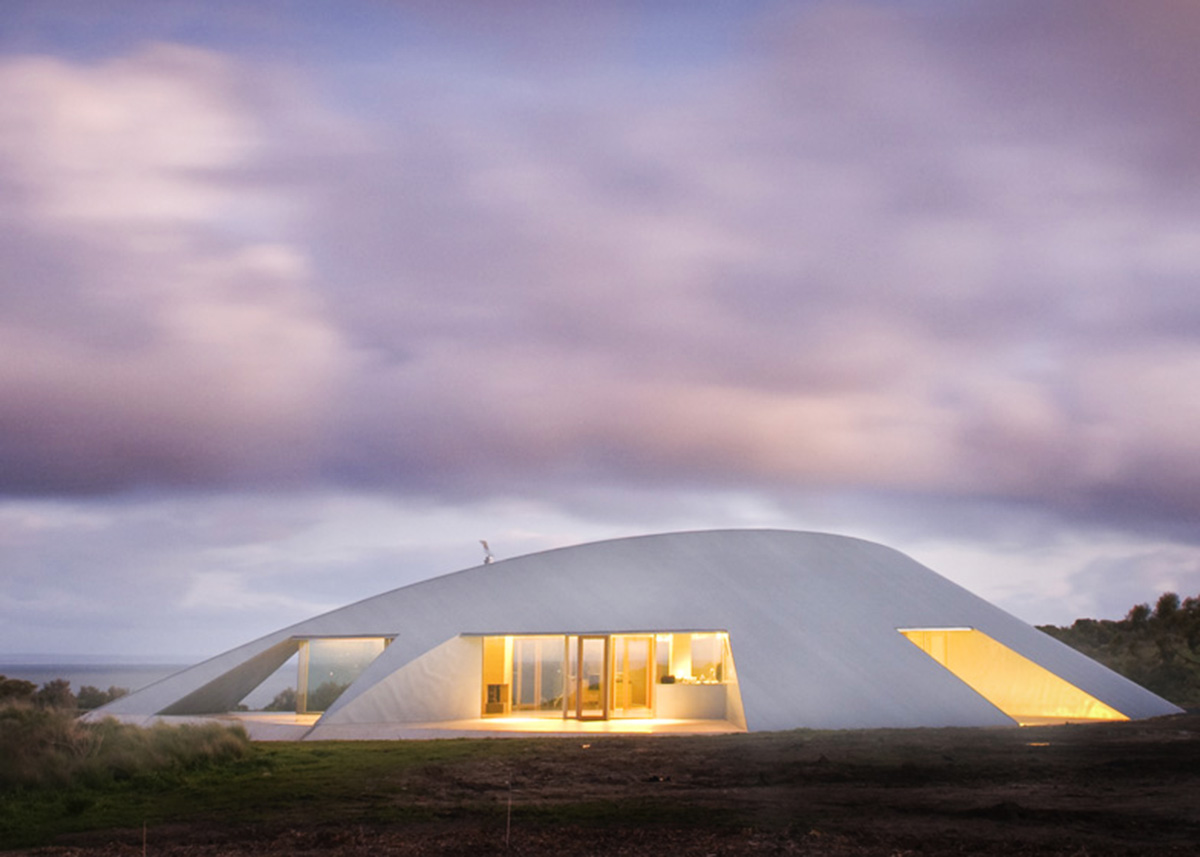
all images © James Stockwell Architect
Sysdney-based architect James Stockwell designed a modern shelter along the South coast of Victoria near Inverloch, the geography turns away from the prevailing wind. The house is also regarded one of the extraordinary houses within the superhouses in the world, which has been named in McCartney’s exhibition, Superhouses: architecture and interiors beyond the everyday, is on at the Museum of Sydney from 29 August. The house forms a protected garden from which peripheral vision of the sea and sky is permitted by tapered facades. James Stockwell explains the owners request with these words: '‘Full outlook to and shelter from the coastal vistas in all directions and to be part of the landscape. An unobtrusive unembellished “best practice” home of how to blend in and live together with a magnificent natural environment.''
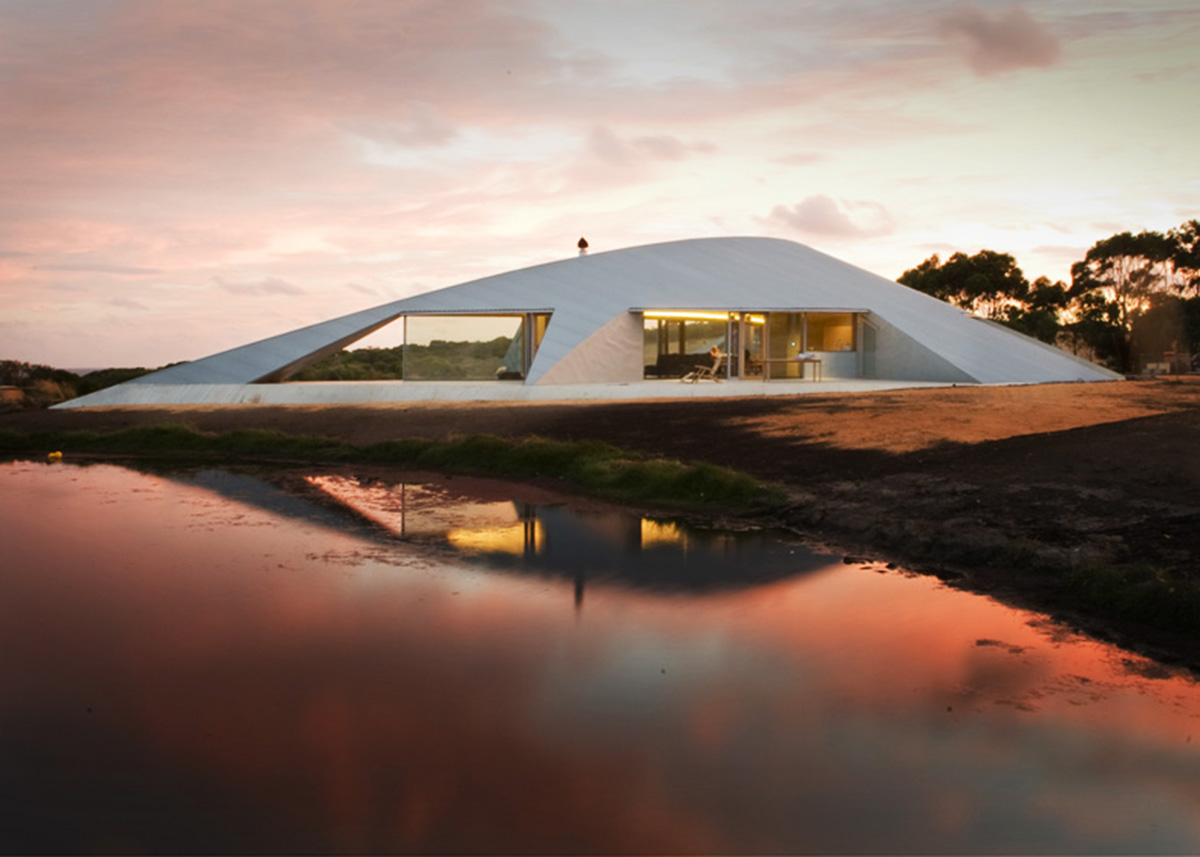
The design looks at the core idea of shelter in an exposed environment, and that shelter may contain all the necessary activities of domestic life in an uncompromised way but that the activities are enhanced by participating in the whole and each yields to the other to a much greater extent. It is shielding, robust and embracing.
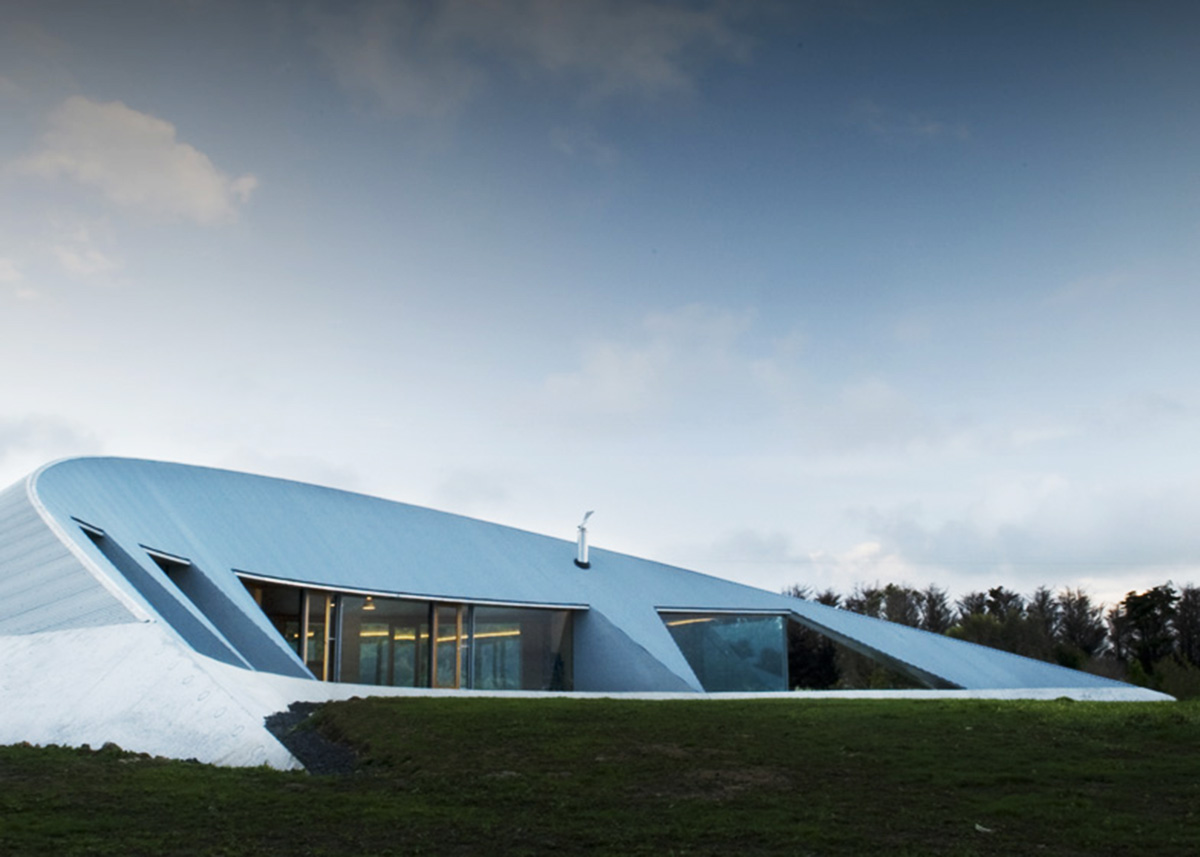
It sets out primarily to achieve the expectations of the owners. It reinforces the language of the rural context of corrugated iron and purposefulness. More broadly it's ambitions are to illustrate the suitability of low embodied energy local materials in contemporary architecture and that architecture be able to tell a story of place and vernacular of local craftsmanship and materials.
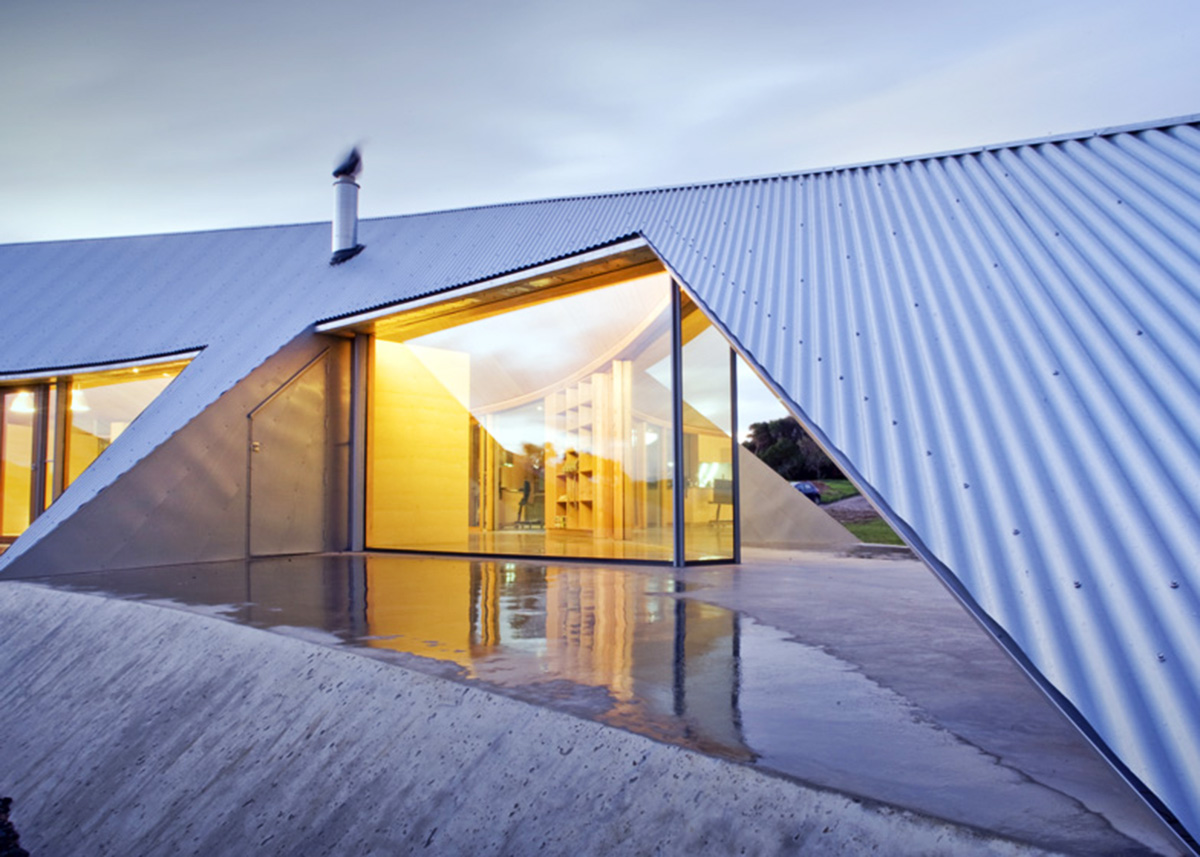
The small material pallet of grey metal and concrete blends with the muted shale geology. The protective exterior is warmed internally by compressed sand thermal mass walls as a fragment of distant sand dunes. The interior structure and joinery is of Vic ash timber and wet areas in bluestone, all Victorian supplied (low food miles).
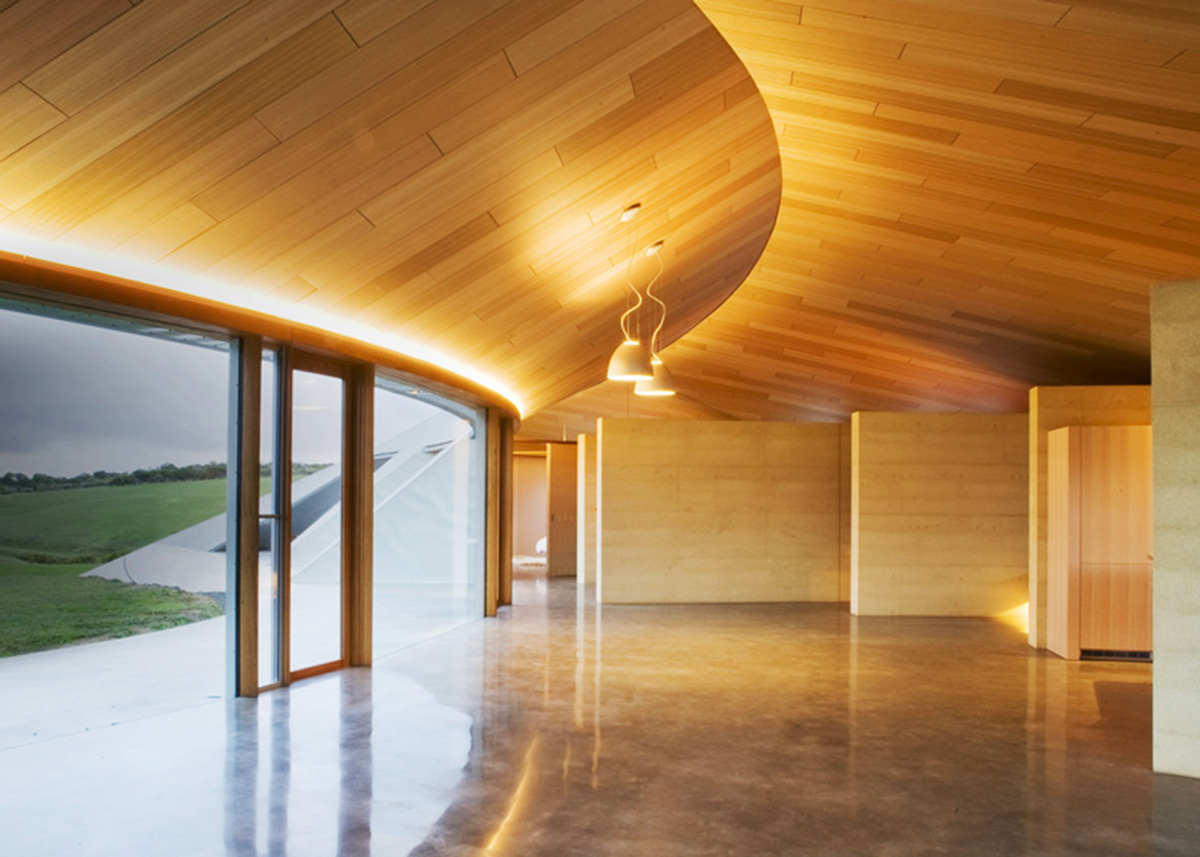
The design process adopts the 1950's modernist philosophy of ‘plastic integrity' as well as the concept of architecture as a field of energies and flows. The form of the house distorts mathematical and structural curves to achieve the interior purpose. The adopted geometry and composition of three sine curves means details are achievable with 2 dimensional radii.
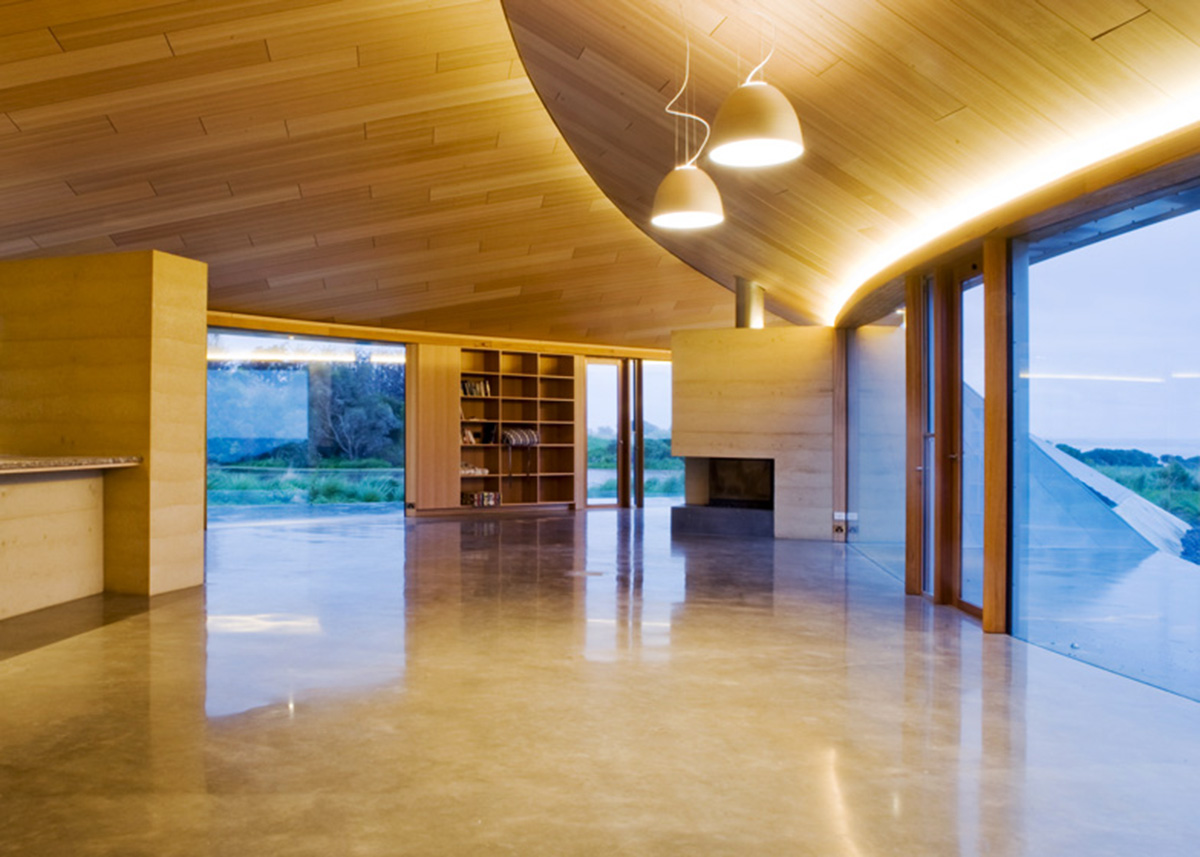
Both concave and convex roof surfaces are 2 dimensional planes and constructed from conventional battens and rafters and corrugated metal. Softwood scissor trusses were erected in 2 days on ‘in plan' arch ring beams of laminated timber braced by the remnant buttresses. Laminated timber beams most aptly suited the formation of the sine curve form of the building courtyard shape, the natural curve of material ductility.
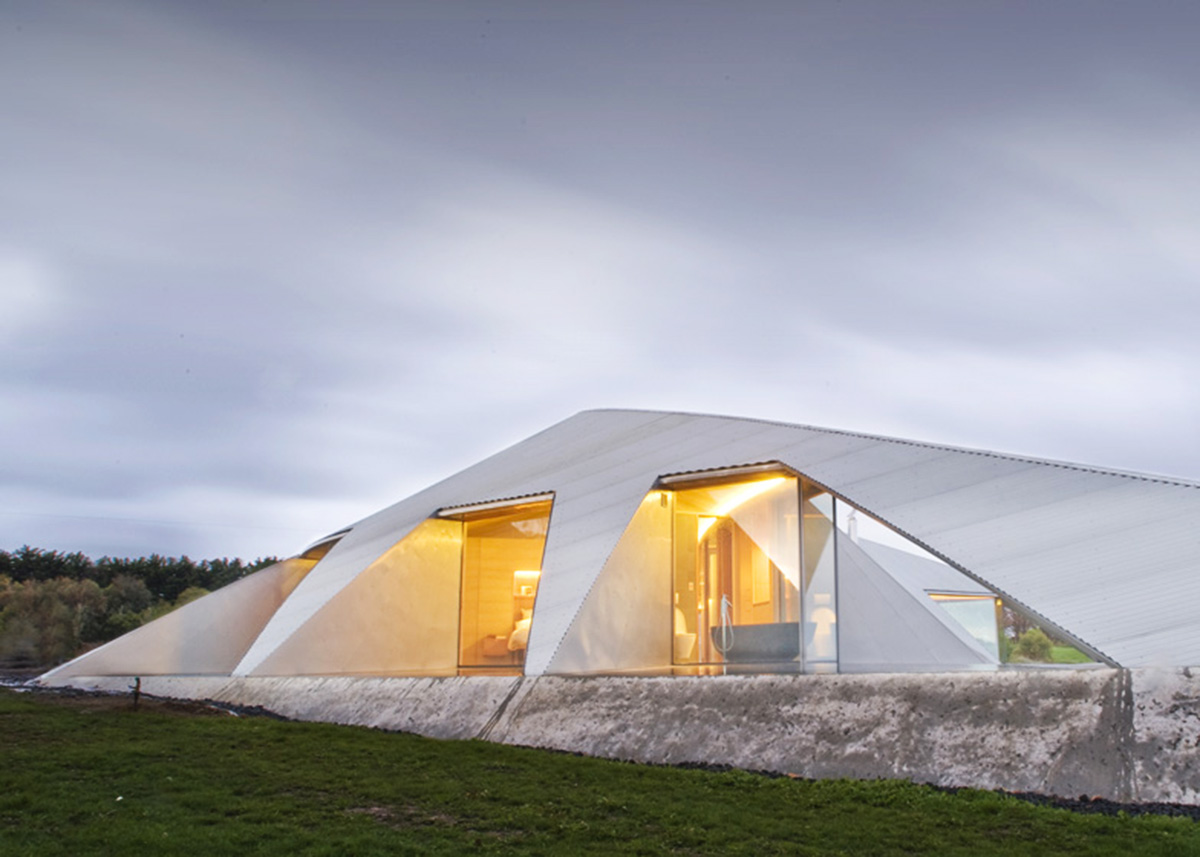
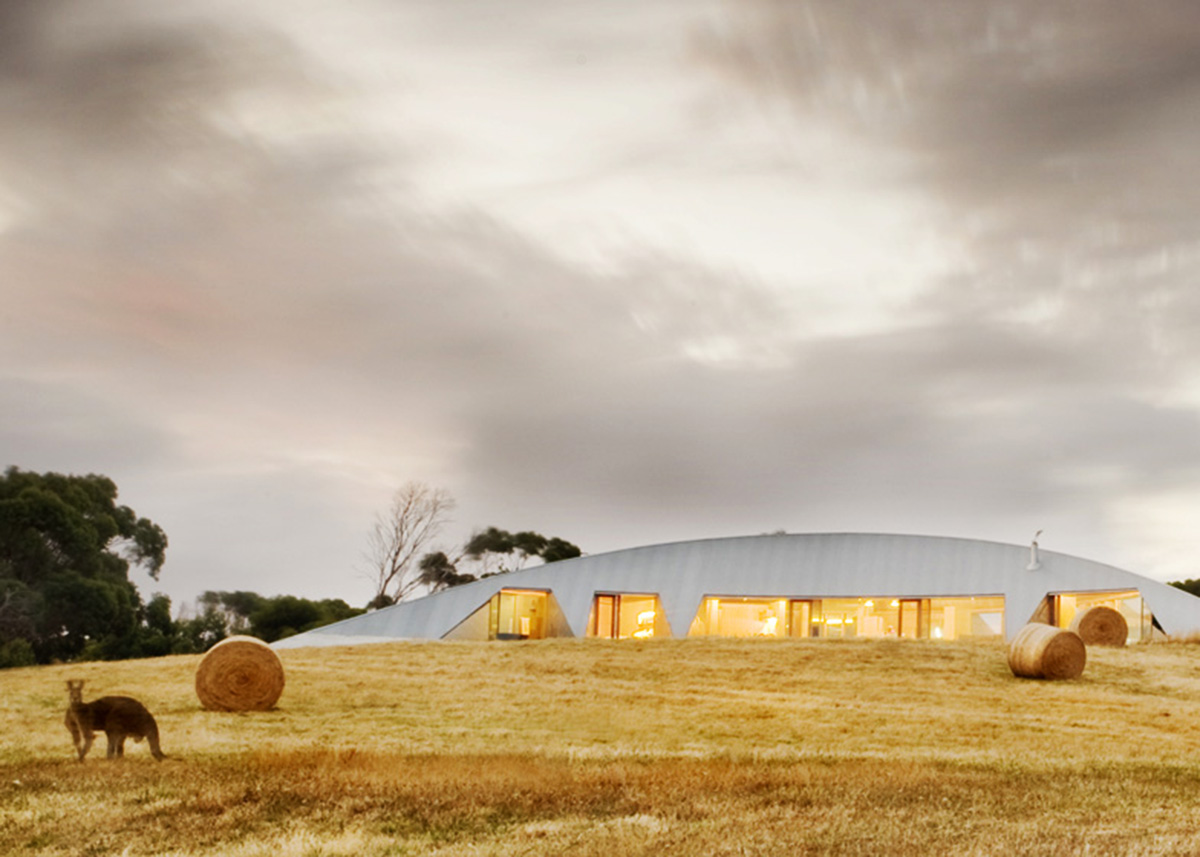
> via stockwelldesign.com.au